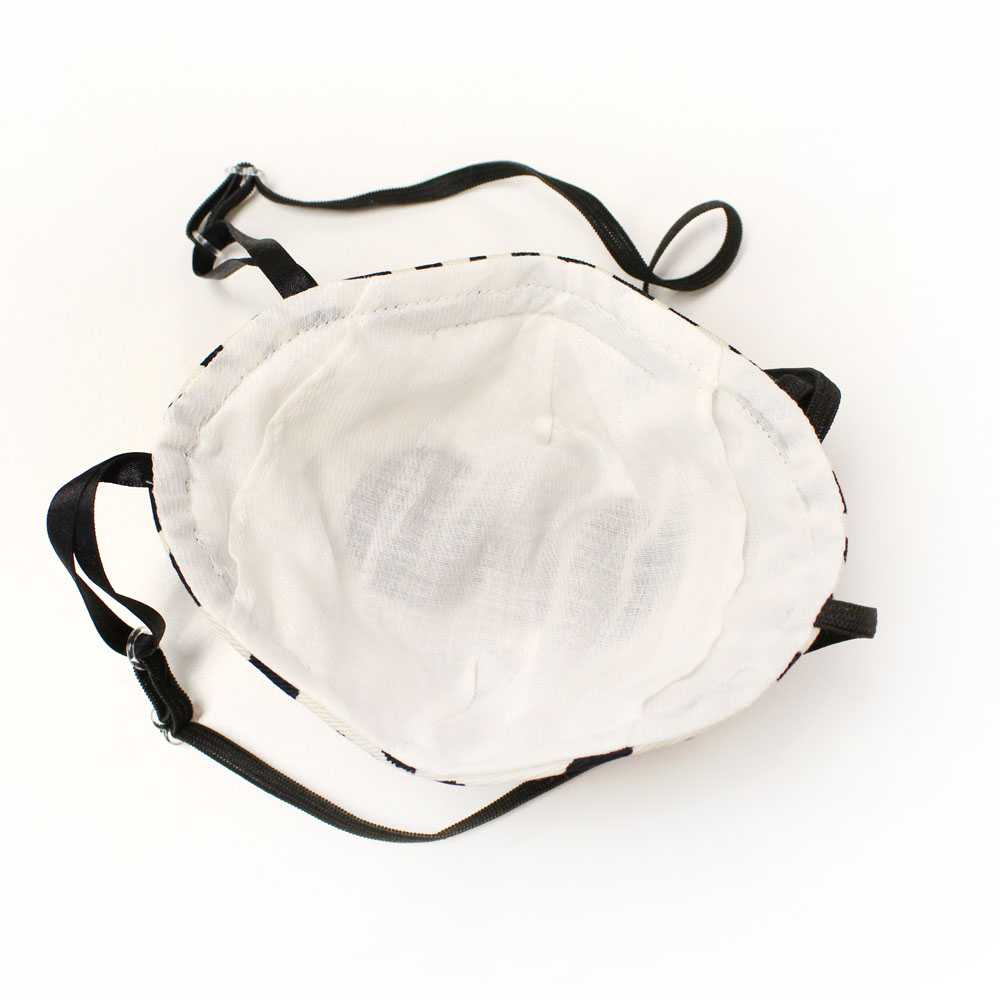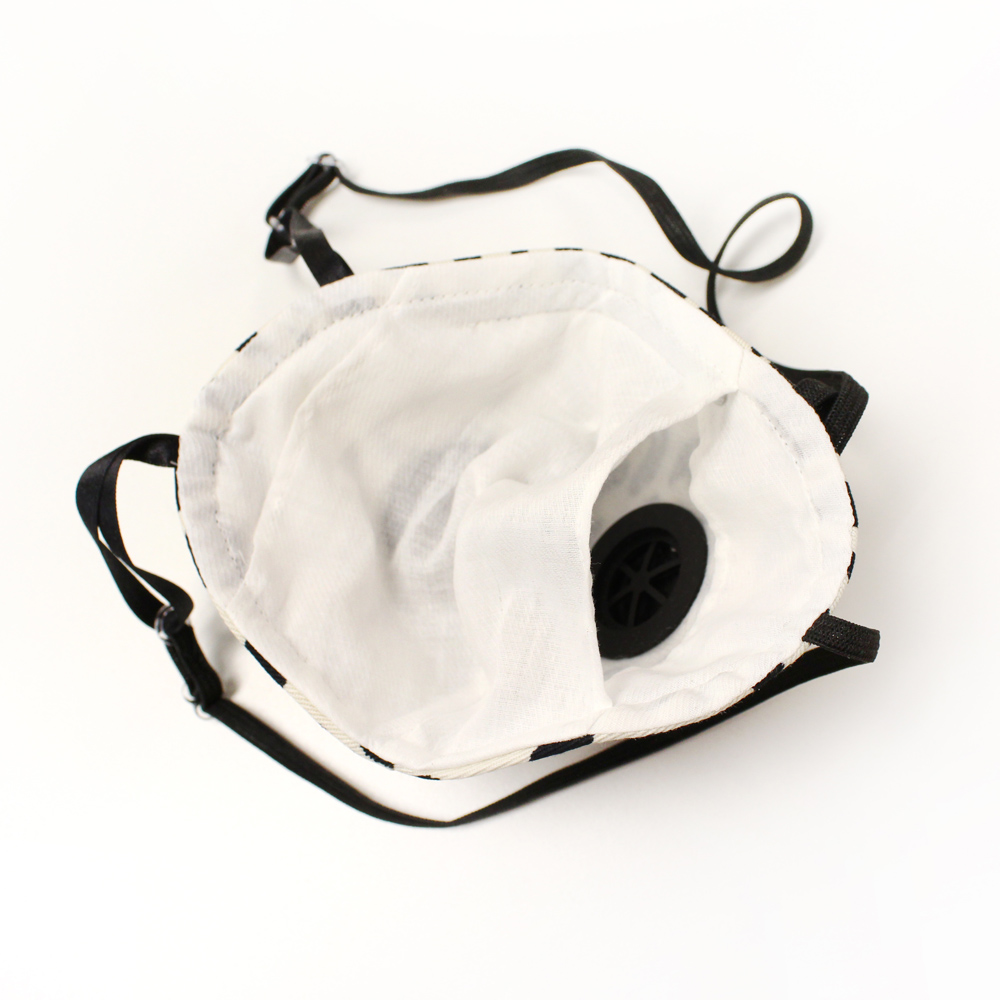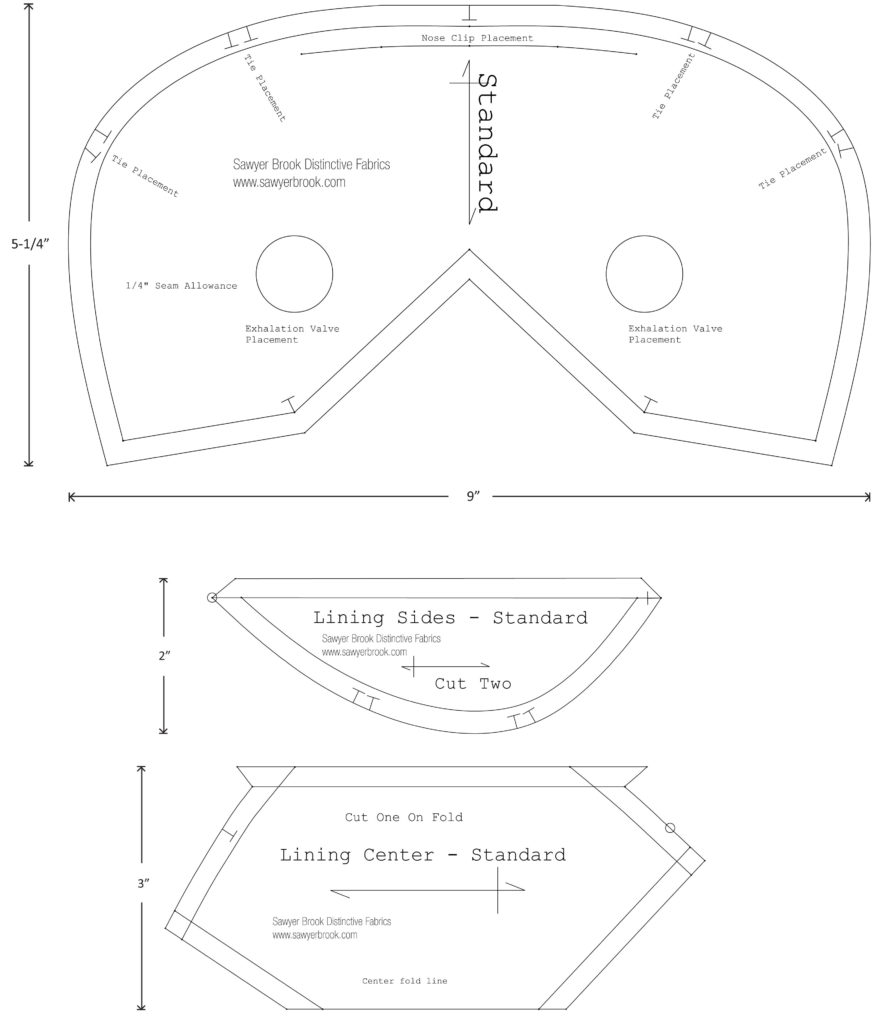Blog
Love the Fabric...
but don't have a clue
what to make with it?
IMAGINE
The Possibilities...
June 6th, 2020
Are you too hot and sweating under your face mask? Are you tired of inhaling [and smelling] your own breath? In this issue of “Imagine The Possibilities …”, we provide a downloadable PDF file of a standard size pattern to use for making a fabric face masks with exhalation valves. We call it the Ease-Breeze mask pattern.
We also share with you a Sew-Along tutorial on how to make this mask.
The Ease-Breeze Fabric Face Mask
Hot air generated during the exhale and carbon dioxide can get trapped between the skin and the mask and may take a bit longer than desired to exit through the two fabric layers of the mask. This is amplified when the mask is worn [correctly] fitted to the face and both air inflows and outflows going through the two fabric layers.
We have noticed that many wearers of homemade masks tend to wear the masks incorrectly, lowering it below the nose to take a fresh breath, wearing it too lose, and/or taking it off completely when speaking – thus defeating the purpose of the mask.
We did extensive research on the exhalation valves to understand the pros and the cons. Many opinions are posted all over the web! A summary of our research of pros and cons is provided at the end of this page for your reference and reading pleasure.
In conclusion, we support that, for best protection in public settings,all individuals ought to wearing face masks or some type of face protection.
This Ease-Breeze face mask was designed taking into consideration the pros an cons with the goal of protecting the wearer while minimizing the risk to individuals who are not wearing the required face protection in public settings.
The mask is made of three layers (recently recommended for better protection from COVID19). The air passes through the three fabric layers during the inhale and a single fabric layer during the exhale. What makes this mask safer than other masks featuring exhalation valves is that the most inner lining fabric layer acts as a filter to the air leaving the mask through the valves during the exhale. Two valves are used instead of one valve to increase the effectiveness of the exhale function.
As indicated by the Surgeon General and the CDC, the fabric mask will not provide full protection from the virus. However, given the current circumstances, it’s better than not having a mask at all.
Ease-Breeze Fabric Face Mask Pattern
A free pattern of the Ease-Breeze mask is provided in a single downloadable PDF file. The file can be printed on 8.5″ x 11″ size paper.
The first pattern piece is for the main fabric (first layer) and for the second layer of the mask. The first layer can be cut from a tightly woven cotton fabric. The second layer can be cut from a filter-type material such as non-woven fusible interfacing, silk chiffon/organza, or cotton.
The other two pattern pieces are used for the three-piece inner lining fabric. This lining should be made from a lightweight cotton fabric such as gauze, voile, or lawn.
Printable Ease-Breeze Fabric Face Mask Pattern
Download Printable Adult Mask Pattern: Ease-Breeze Standard Mask Pattern [PDF]
Download Printable Child Age 6 & Up Mask Pattern: Ease-Breeze Child 6 & UP Mask Pattern [PDF]
Download Printable Child Age 3 – 5 Mask Pattern: Ease-Breeze Child 3-5 Mask Pattern [PDF]
This mask pattern is worn tightly fitted around the face with no air inward or outward leakage from around the mask perimeter. We found that wearing this mask was more comfortable than the face masks made with two layers of cotton fabrics and no exhalation valves.
A Sew-Along on how to make your very own Ease-Breeze Mask.
Materials used:
- Animal print light to medium weight 100% cotton twill fabric for the first outer layer.
- Pellon ShiTailor (TM) 950F non-woven fusible interfacing (both as a filter and for added structure) for the second layer.
- 100% cotton lawn fabric for the three-piece lining (third inner layer).
- Two strips of 1/4″ black knit elastic sizes 16″ and 11″. 1/4″ Clear plastic rings and slides are applied to adjust the length of the straps, as needed.
- Two 6″ strips of 1/4″ black satin ribbon – used to extend the elastic straps and reduce the amount of elastic needed.
- Two black exhalation valves.
- One Aluminum Nose Clip.
Summary of our research findings
The major pros are that exhalation valves on a tightly-fitted face mask help reduce breathing resistance when the wearer exhales (breathes out). Those valves open only when the wearer exhales, helping air exit the respirator. Some users feel that a mask with an exhalation valve keeps the face cooler and reduces moisture build up inside the mask.
The major con is that a properly fitted face mask that has exhalation valves protects the wearer from particles entering the wearer’s breathing zone, but does not protect people other than the wearer who are not wearing any type of face covering.This is because the exhalation valve may allow droplet/aerosols to leak outward when the wearer exhales. It is not recommended that a person who is exhibiting symptoms of illness wear a valved respirator, because there is a possibility that exhaled particles may leave the respirator via the valve opening and enter the surrounding environment, potentially spreading the disease.
Face coverings, such as homemade mask without an exhalation valve, are not designed to fit tightly to the face and have gaps around the face through which air will leak, both inward when the wearer inhales and outward when the wearer exhales, potentially including expelled particles. Air and particles will also travel through the mask material at different rates depending on its construction.
The CDC addresses the following question on its website: “My N95 mask has an exhalation valve, is that okay?” They advise that “respirators with exhalation valves should not be used in situations where a sterile field must be maintained (e.g., during an invasive procedure in an operating or procedure room)because the exhalation valve allows unfiltered exhaled air to escape into the sterile field when the mask is used in sterile conditions”.
The CDC further states: “Though fabric type and filtration plays a role in mask effectiveness, the most important thing to keep in mind when choosing or making a face mask is fit. Improperly fitting masks which left gaps for leakage decreased filtration efficiency over 60 percent”.
A paper published by 3M (makers of the N95 Mask) addresses the following question: “Can the valve on a respirator result in the release of particles containing germs if the wearer is infected with a disease that spreads through the air?”
The paper states that “the breathing rate of people during normal or sedentary work is relatively low. As a result, the valve on a filtering face respirator would not be expected to open very far during exhalation, which would create only a limited path for the large aerosols expelled by the wearer to navigate. Particle physics predicts that at least some of the wearer-generated aerosols would impact on the back of the valve instead of exiting out through the valve opening.”
Certainly, a mask with an exhalation valve should NOT be worn by anyone who has been infected with the COVID19 virus or may be an asymptomatic carrier of the virus if that person will be in any proximity to others who are not wearing any type of face protection.
As always, your feedback and suggestions are most appreciated. Let us know what fabrics you would like us to carry and how we can make your Sawyer Brook shopping experience more enjoyable.






